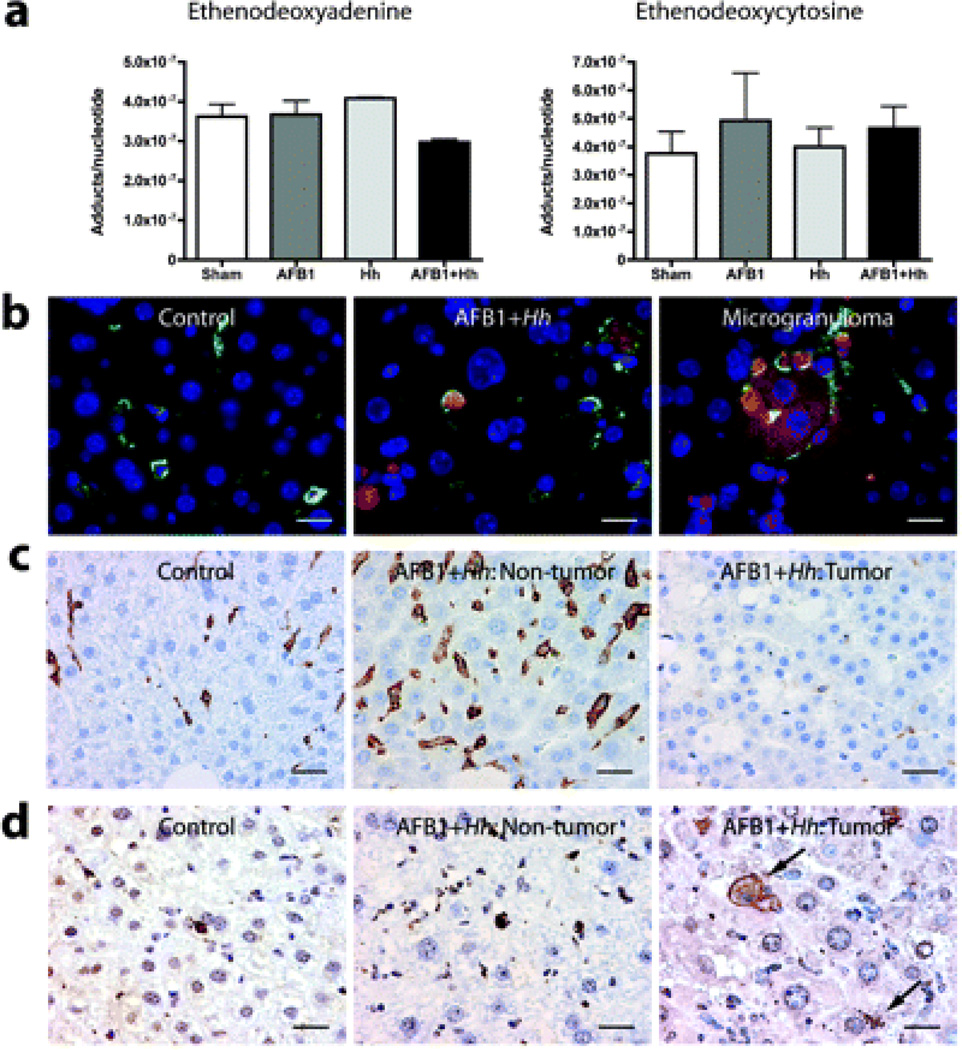Figure 5.
Helicobacter hepaticus increases oxidative but not alkylating damage in the liver, and tumours show suppression of immune surveillance with retention and accumulation of oxidatively damaged hepatocytes. (a) Comparison of etheno nucleotide adducts between groups as determined by liquid chromatography/mass spectrometry. (b) Double fluorescence immunohistochemistry (IHC) for Küppfer cells and macrophages (F4/80, fluorescein, green) and 9,12-dioxo-10(E)-dodecenoic acid (DODE; Cy3, red); nuclei counterstained with 4′,6-diamidino-2-phenylindole (DAPI, blue). (c) Chromogenic IHC for F4/80+ Küppfer cells and macrophages in non-cancerous and cancerous liver (diaminobenzidine (DAB), brown; haematoxylin counterstain). (d) Chromogenic IHC for DODE in non-cancerous and cancerous liver. AFLB1, aflatoxin B1, Hh, H hepaticus.

